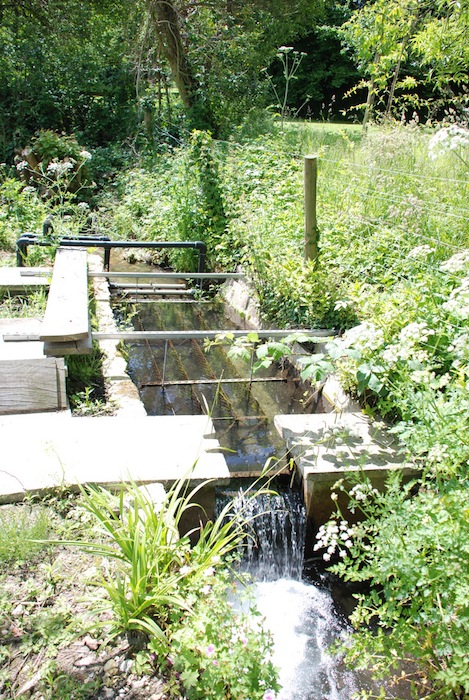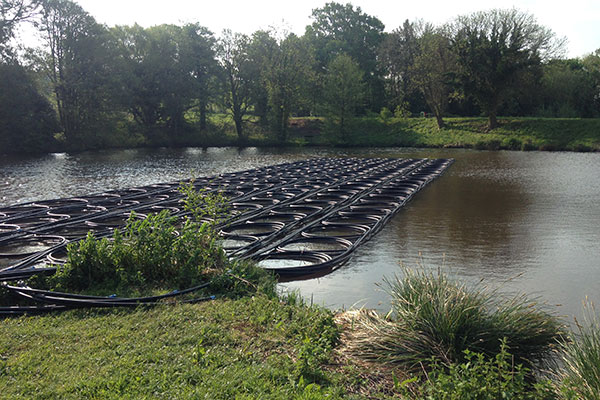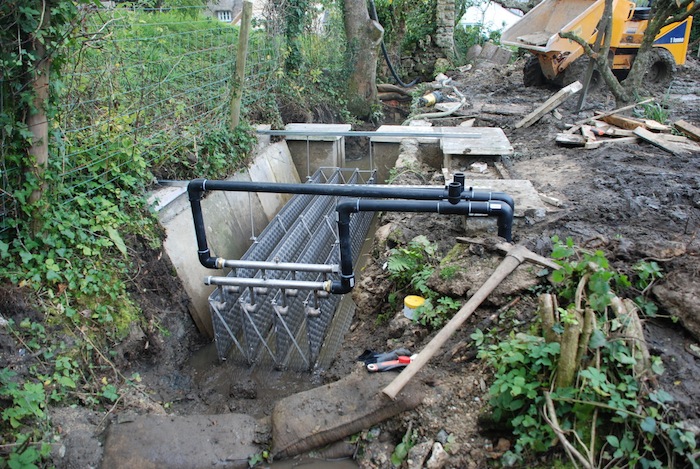


What Is a Water Source Heat Pump?
Water source heat pumps (WSHPs) move heat from a source of water to your household in an extremely efficient manner, especially if the water temperature is around 5 to 8 degrees Celsius. As such, there are numerous advantages of installing heat pumps.
Depending on the type of heat pump, either the water from a river or small stream is pumped through the heat pump, or a special refrigerant fluid is pumped through pipes laid in the body of water. While both have their own advantages, the latter type requires less maintenance and an easier application process, making it a cheaper option.
Water source heat pumps have been in use since the late 1940s. They use a rather constant temperature of the water as an exchange medium instead of extracting the heat from the outdoor air temperature. Thus, water source heat pumps can reach reasonably high efficiencies (300% to 600%) even on the coldest winter nights, in comparison to 175% to 250% for air-source heat pumps on cool days.
The reason water source heat pumps are so efficient is that they take two kilowatts of free heat from the water and one kilowatt of electricity to produce three kilowatts of heat. This is done with heat going up the flue pipe. As a result, the running costs of heat pumps are low.
How Do Water Source Heat Pumps Work?
The system is made of efficient heat pump units which are interconnected via a loop which the water passes through. Every unit offers specific air comfort requirements in the particular zone they are installed in.
During cold weather, the water source heat pump transfers heat from a water loop through the unit’s specially designed refrigerant-to-water heat exchanger and then move this heat into the central heating system.
In extreme weather conditions, when a lot more heat is necessary to warm up the building, units are operating in a heating mode; hence, heat is provided to every individual unit from the water of the loop. In case there isn’t enough heat in the looped water, an energy-efficient fluid heater must be installed in the loop to assist the heating process.
Ideally, the water source should be close to the house, so that it would not need to be pumped up to a significant height so the energy required for pumping could be decreased, thus increasing your savings.
Water can be sourced from substantial distances if the pipe diameter is adequately big, especially in a downward direction. When considering installing such a device, you must take into account the permissions and paperwork that must be completed to start your heat pump installation. Still, installing a water source heat pump is worth it in the United Kingdom.
Types of Water Source Heat Pumps
When looking for a new water source heat pump, you must consider the different types to determine which one will work the best for you. This is based on a variety of factors such as the proximity of your home to the body of water and if your water source is underground or surface level.
Closed-Loop Water Source Heat Pump Systems
If there’s a sufficient body of water near your house, this will be the lowest-cost option. A supply line pipe goes through the ground starting from the building to the water and intertwines into circles of at least 8 feet under the surface to avoid freezing. Coils must be placed in a water source which meets the minimum requirements in matters of volume, depth, and quality.
Open-Loop Water Source Heat Pump Systems
This system utilises a well or a surface body of water while the heat exchange fluid goes through the heat pump system. Once it dispersed through the whole system, the water returns to the ground via the well, a recharge well, or surface discharge.
Unfortunately, this option is practical only where there is a reasonable supply of clean water, and at the same time, all regulations and codes regarding groundwater discharge are completed. A filtration system or other forms of water treatment is required to gain the necessary licenses. Furthermore, the heat pump must also use a corrosion-resistant system as a large amount of water is pumped through the pipes.
Environmental Legislation to Keep in Mind
Specific environmental regulations and considerations must be addressed before installing water source heat pumps. Open-loop systems alter the temperature of groundwater, while thermal plumes affect hydrochemistry and bacteriology.
Depending on the type of system you wish to install, licenses may be required. For example, hydrogeology and thermal properties have to be investigated, and they require a license to examine groundwater and an abstraction license (permission of diverting surface or groundwater) which can be obtained from the Environment Authority.
Water source heat pumps work by using underground aquifers as both a heat source during winter and a heat sink in the summer. Aquifers offer good heat conductivity, stable temperatures, and large capacities for heat storage, thus, providing you with energy-efficient heating and cooling and a reduced carbon footprint. In the UK, there are plenty of well-suited aquifers for water source heat pumps.
